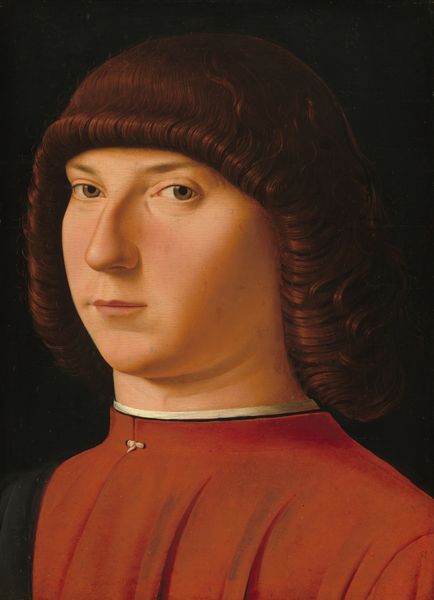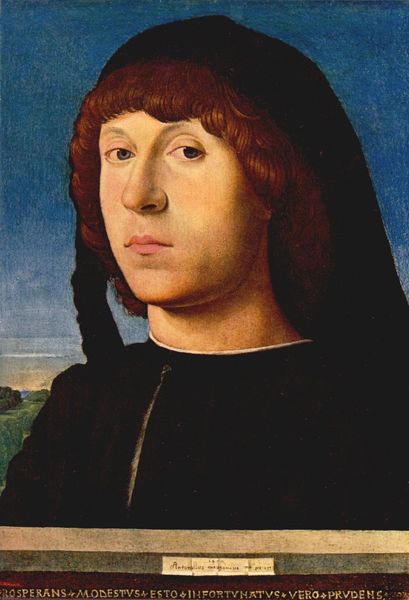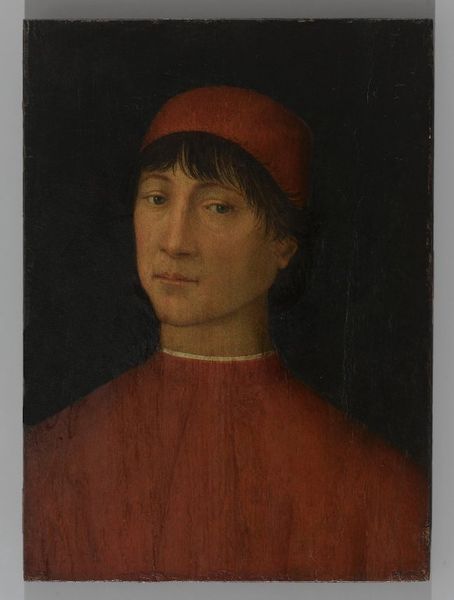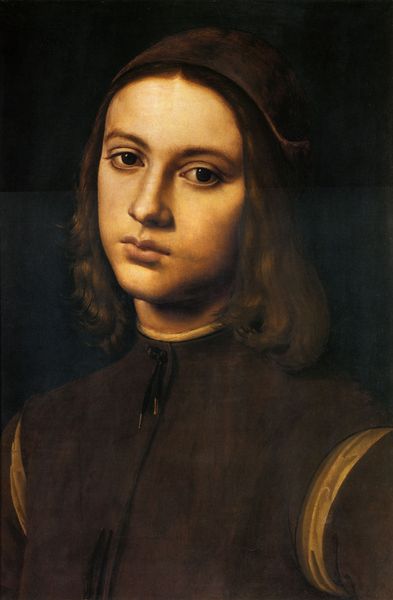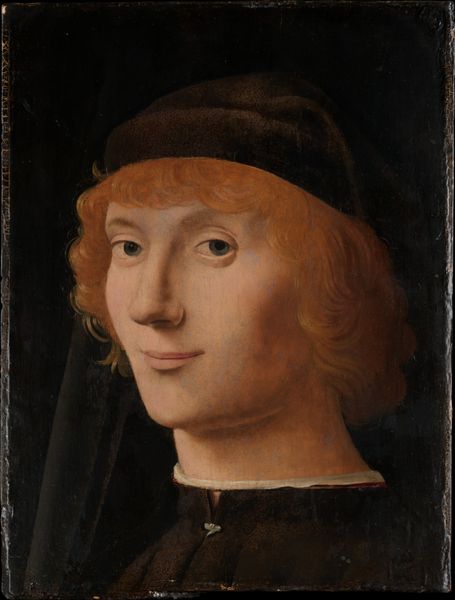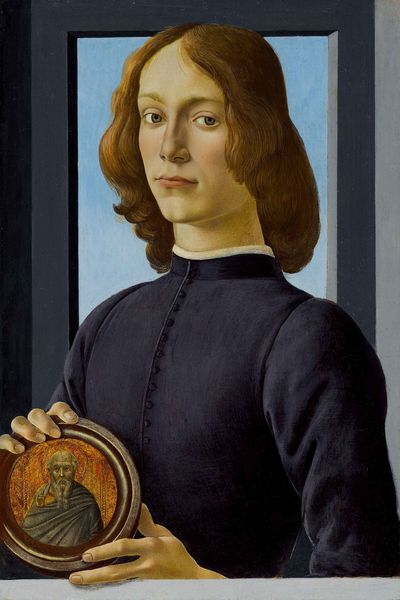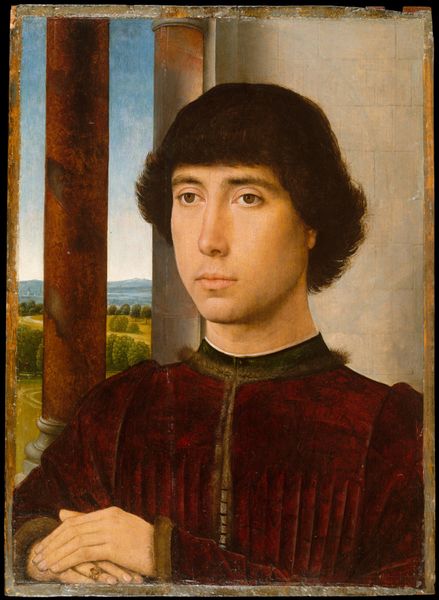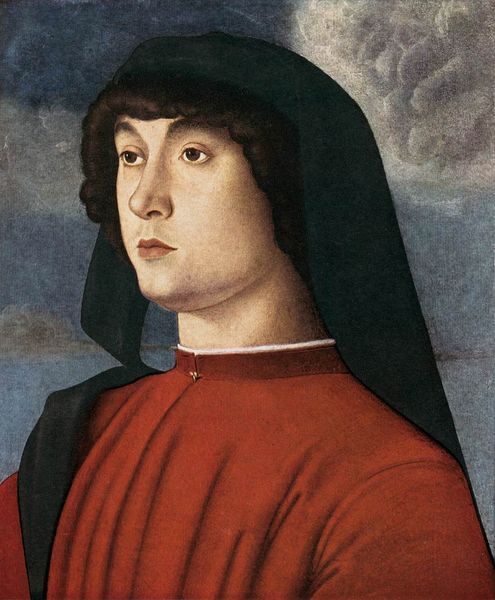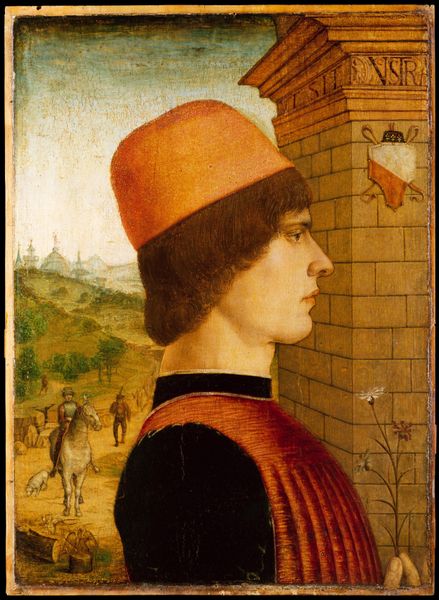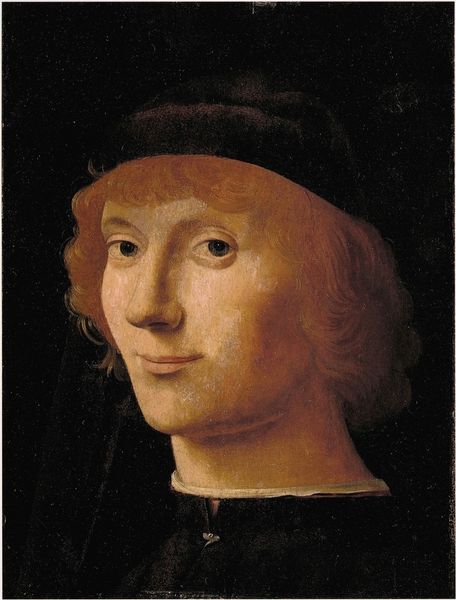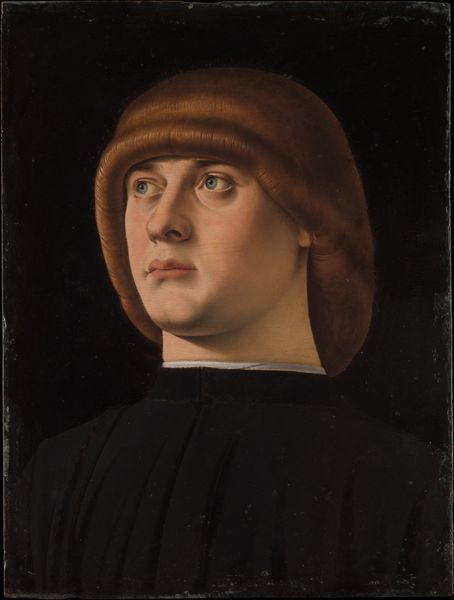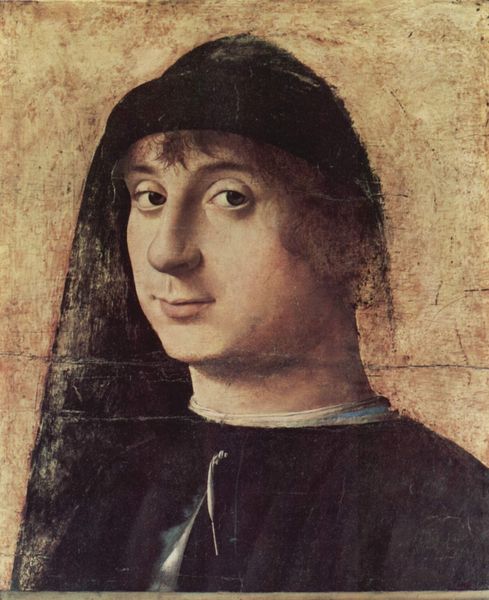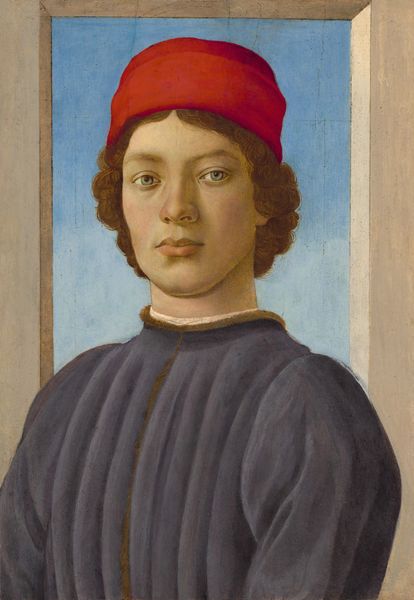
painting, oil-paint
#
portrait
#
head
#
face
#
painting
#
oil-paint
#
portrait subject
#
portrait reference
#
male-portraits
#
portrait head and shoulder
#
animal portrait
#
animal drawing portrait
#
history-painting
#
facial portrait
#
italian-renaissance
#
forehead
#
portrait art
#
fine art portrait
#
realism
#
celebrity portrait
#
digital portrait
Dimensions: 32 x 26 cm
Copyright: Public domain
Curator: Looking at Antonello da Messina’s "Portrait of a Man" from 1474, currently housed in the Gemäldegalerie in Berlin, I’m immediately struck by the subject’s gaze. It's quite intense. Editor: Yes, that gaze feels remarkably modern. My first thought goes to the oil paint, it is remarkably rendered, how would that type of work have been received then? What would its value have been perceived as? Curator: Well, oil painting was relatively new to Italy at this time. Antonello da Messina is credited with popularizing the technique, which he likely learned from Early Netherlandish painting. He's manipulating the materiality in such a precise and exacting way. Look at the smoothness achieved, then contrast it with a raw fresco. The market and labor would value this far above other work produced by similar means. Editor: Interesting, that shift toward oil paint signals not only an aesthetic preference but also a change in artistic practice. Thinking historically, what implications did that have for portraiture at this time? Was it about verisimilitude, a means to display wealth and power? Curator: It absolutely impacted workshop practices, how pigment was ground, the canvas preparation...everything was shifting to a more deliberate and calculated approach. Editor: Right. So, in that context, how did the production and the reception of such portraits change? Was it less about simple representation and more about projecting an idealized version of the individual, imbued with specific social meaning? The history of museums is filled with portraiture for that purpose. Curator: Precisely. The detailed rendering certainly allowed for greater accuracy, but it also gave artists control in shaping perceptions. How could he best translate an inner idea by only using labor and materials at his disposal. Editor: Ultimately, "Portrait of a Man" represents an intriguing intersection of material innovation, artistic skill, and socio-political aspiration. I love what a single subject in time shows. Curator: Yes, a singular piece really opens up many roads for thinking. Seeing the processes of art production gives so much food for thought on historical perception.
Comments
No comments
Be the first to comment and join the conversation on the ultimate creative platform.
